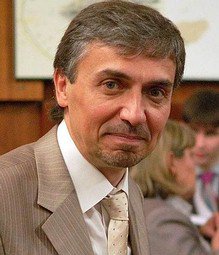For me to live is Christ. Metropolitan Anthony Bloom
Curated by Aleksandr Filonenko, Dmitrij Strozev, Konstantin Sigov, Giovanna Parravicini, Francesco Braschi and Adriano Dell’Asta.
Born in 1914, Andrej Bloom, the future Metropolite Antonij, shared the fate of many of his fellow Russian compatriots who, after the 1917 revolution emigrated to Europe. In a context of despair, poverty, and alienation, suddenly, in his 14th year, he encountered Christ and found out that: “God took us like grains of wheat and spread us all over the world ”. The following is the story of his calling, first as a doctor and a monk in France, and then as a priest and a bishop in the UK. For decades he has been representing the free voice of a Church trapped into silence by the atheistic regime of the Soviet Union.
The encounter with Christ at the outskirts of existence represents a turning point for him, but it brings back a meaning to the tragic events happening to his fellow citizens: “We found ourselves being without a country, separated from everything that we loved, foreigners in a foreign land, being useless and unwanted – nothing was left but misery. And suddenly we realized we had God, a God we had nothing to be ashamed of and who was not ashamed of us… in the depths of our abyss of sorrow we found Christ, who was saving us, comforting and encouraging us to live”.
The exhibition is constructed around these two words – turning point and encounter – which are evident in the staging, by means of semi-transparent screenings (“he is a man who made himself transparent to Christ”, Michael Ramsey said referring to him), that guide through the path made of turns and widening, where you come across faces, characters and stories. The six sections of the exhibition represent as much turning points in Antonij’s life, marked by encounters, which sometimes seem weird or incomprehensible, but which have gradually open wide the evangelical deep of reality and of every encounter of which everyone’s existence is full.
Even the choice of the colors – black and blue – underlines this double register of encounters – a human encounter and an encounter with the Risen – “it’s the moment when people meet face to face, sometimes for a very brief moment, but also forever, because, when we meet each other with heart, faith and charity, with a common hope, in the mark of a common Cross, and in the light of a common winning resurrection that will come, one cannot part from the others – earthly distance does not separate people anymore.”
This path is what Metropolite Antonij defined as a “school”: first of all a school of gaze. A path ending in the giant cloth embroidered by Marina Bel’kevic, which marks the beginning and the end of the path: seen backwards, it only looks like a nonsensical maze of filaments (like the events happening to us every day); when seen from the front (in the gaze of God), one can read in it the scene of Christ descending to the underworld to save humanity and take it with him.














